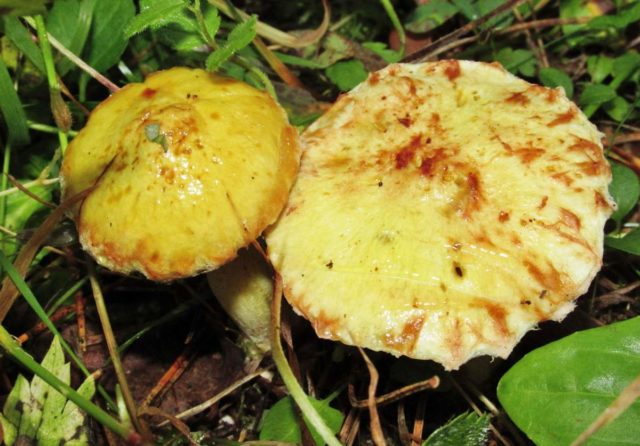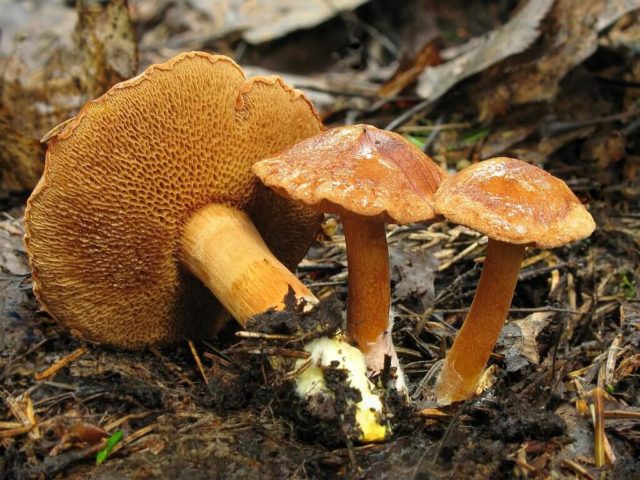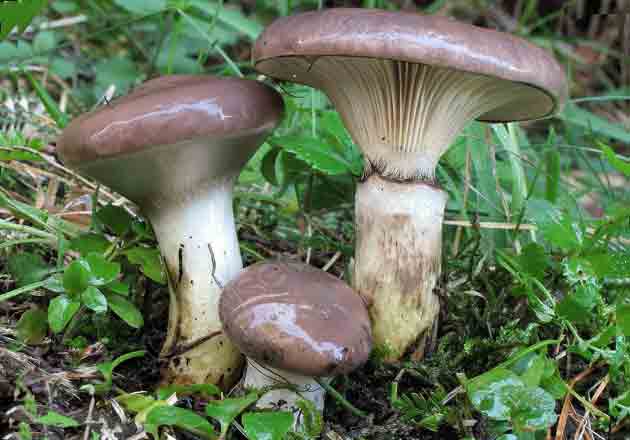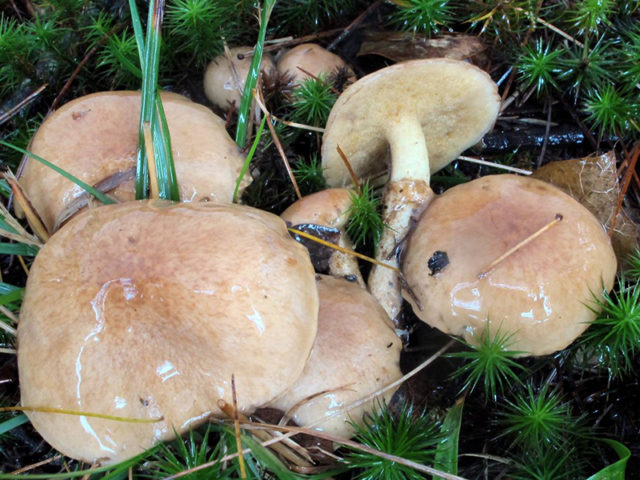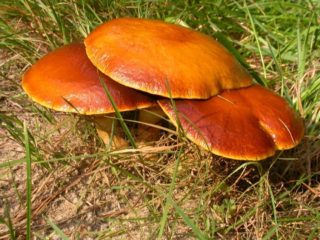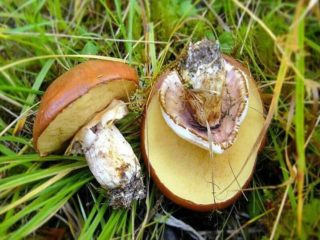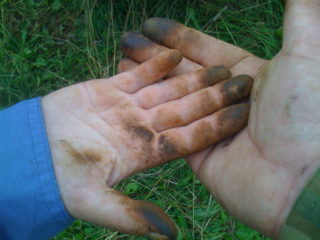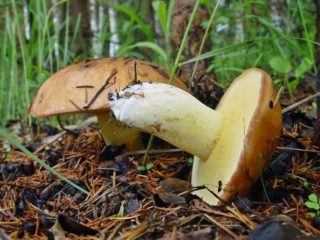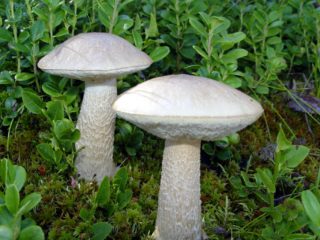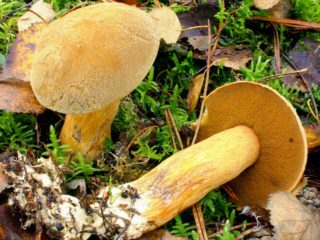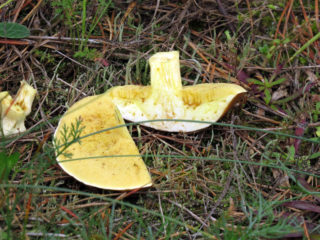Content
Butterflies are mushrooms that belong to the Butteraceae family, Boletaceae series. Siberian oiler (Suillus sibiricus) is a species that belongs to the genus of tubular, edible mushrooms. The species gets its name from the sticky, oily mucus in the form of a film that covers its cap. The species is widespread in Siberia and the Far East. It is rare in Europe, but can be found in cedar forests. In some European countries it is even listed in the Red Book.
What does a Siberian butterdish look like?
This is a small to medium-sized mushroom, creamy-yellow in color, which hides among fallen leaves in coniferous and mixed forests.Its yellow, smooth cap is quite easy to spot; it is rarely hidden under a layer of fallen leaves; you just need to bend down and take a closer look - it grows in a large family that is hard to miss.
Description of the cap
The description of Siberian boletus, according to the photo, contains the following characteristics: the size (diameter) of the cap of a newly formed fruiting body can be 4-5 cm, of a grown one - up to 10 cm. The shape of the cap is conical, growing, it becomes almost flat with a small blunt tubercle along center. Its color can be light yellow, dirty yellow, cream and even olive with brown fibers. The top of the cap is covered with an oily, glossy film, which can be easily removed if desired. If air humidity rises, mucus may accumulate on the surface of the cap. On the reverse side, the cap is formed by whitish oblong and thin tubes.
Description of the leg
The length of the mushroom stem does not exceed 7 cm, thickness - 2 cm. Closer to the ground it expands, near the cap it becomes thinner. Its shape is cylindrical, curved, and it is not hollow inside. The color of the leg is dirty beige, the surface is covered with small brown spots. Young specimens have a ring on the stem, which becomes deformed as they grow, turning into a kind of fringe or spongy growth.
Is the Siberian butterdish edible or not?
This mushroom species grows in coniferous and cedar forests in large groups and bears fruit generously and often. The harvest is harvested from mid-summer until the first frost. Forest products can be safely eaten after heat treatment.They have good taste and belong to the edible mushroom species of the lowest category.
Where and how does the Siberian butterdish grow?
The habitat of this species is quite extensive. It forms spores wherever there are Siberian cedars. Some mycologists claim that the Siberian butterfly also forms mycosis with other conifers. This mushroom species can be found in the coniferous forests of Siberia, the Far East, North America, Europe, and Estonia.
From June to the end of September, the Siberian oiler bears fruit. It grows in large clumps that produce large numbers of young shoots. It is cut along the stem with a sharp knife, close to the soil, being careful not to damage the mycelium. Very small specimens are left to grow.
Doubles of the Siberian oiler and their differences
Inexperienced mushroom pickers often confuse Siberian boletus with pepper mushroom. Their shape and color are very similar.
There are also differences:
- the cap of the pepper mushroom does not have a glossy coating;
- absence of a ring on the leg;
- the spongy layer has a red tint, while the oiler has a yellow tint.
Pepper mushroom is considered conditionally edible due to its pungent taste. In the cuisines of some countries it is used as a spicy seasoning. In Russia, the type has not received recognition or distribution.
Spruce weed is a mushroom that is especially similar to the autumn Siberian butterdish. The main difference between the mokrukha and the Siberian butterdish, the photo and description of which is given above, is the plates instead of tubes on the back of the cap. In addition, they are covered with mucus, whereas those of the mushroom from the Siberian forests are dry. The color of the mokrukha's cap is more gray, while that of the oiler is yellow.
The sour butterdish is almost identical to its Siberian counterpart. It is distinguished by the olive color of the cap and black dots on the stem, closer to the base near the soil. The mushroom is edible, but has a sour taste, which is why it is not eaten. If it gets into a basket with other brothers, it will turn them purple.
How to prepare Siberian boletus
Before marinating, it is recommended to remove the skin from the mushroom cap - it may taste bitter. If the mushroom needs to be boiled or fried (heat-treated), then cleaning operations are not necessary. Also, this type of mushroom is dried on strings in a dry, warm room, preparing for the winter, sealed in jars, pre-boiled and marinated with vinegar and spicy spices. In winter, after opening the jar, the finished product must be rinsed again to remove mucus and seasoned with any seasonings to taste.
They also prepare mushroom cutlets, filling for dumplings, pancakes and pies. Mushrooms are fried with potatoes and used as a side dish for pasta and porridge. In each dish they go well with the other ingredients, especially sour cream and cheese, giving the dish a rich mushroom flavor.
Conclusion
Siberian oiler is a common, edible mushroom that can be found everywhere in the coniferous forests of the northern regions of Russia. This species bears fruit abundantly; it will not be difficult for a mushroom picker to collect several buckets of mushrooms if one can find the places where they grow. Maslenitsa mushroom from Siberia is suitable for preparing any mushroom dishes.
